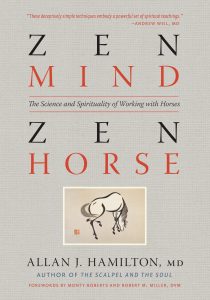
Breed Facts
Status:
Critical
Use:
Draft
Adult Weight:
Average 1800 lbs.
Adult Height:
16-17+ hands
Temperament:
Gentle; Steady
Experience Level:
Novice-Intermediate
Notes:
Strong; easy keeper; only chestnut in color; selected only for agriculture; likes people
SUFFOLK
The Suffolk is the only draft horse breed developed and selected exclusively for farm work. The breed originated in the English counties of Suffolk and Norfolk, where draft horses date back to the 1500s. The Suffolk Horse Society was founded in 1877, and the first volume of the Suffolk studbook was published in 1880. All horses in the studbook trace their male lines back to the foundation stallion “Crisp’s Horse of Ufford”, foaled in 1768.
Besides the fens (fertile, drained marshlands) in the west, Suffolk and Norfolk are almost entirely bordered by the North Sea. The isolation of the region and the high value of Suffolk horses meant that they were bred pure and changed little over the past three hundred years. The Suffolk is unusual among draft breeds in that it was never selected for anything other than agricultural work. As a result, the breed retains characteristics relevant to the breeding choices that were made including the strength and stamina to plow through heavy clay, hardiness, a willing disposition, and easy-keeping qualities.
Suffolk horses were first imported to Canada in 1865 and to the United States in 1880. The Suffolk was found in parts of the Midwest, New England, and Ontario, but was never as popular as the Percheron, Belgian, or Clydesdale. Although the breed’s numbers increased in the 1930s, they declined after World War II and the breed came close to global extinction in the 1950s. It was only through the efforts of a few breeders that the Suffolk survived and, while still rare, its numbers are increasing. Today there are about 600 Suffolks in the US and around 200 in England. Their moderate size for a draft breed has been an asset in its promotion to those who continue to farm with horses.
The Suffolk breed is consistent and distinctive in appearance. All Suffolks are chestnut in color – one of seven shades between gold and liver; no other color is acceptable in the Stud Book. White markings are rarely seen but there may be a star or snip on the face or white ankles or fetlocks. They horses stand 16-17+ hands (64-68”) at the withers and average 1,800 lbs. The legs appear short, and are clean and well-muscled, with dense bone. They are placed well under the horse and do not have the long feathering found on some other draft breeds. They have round feet that are strong whether kept shod or barefoot. The shoulders are inclined to be upright, suitable more for power than for action. The back is short and strong, and the hindquarters are long and smooth. The breed’s nickname “Suffolk Punch” refers to the horses’ rounded appearance.
They love to work and have good endurance. They like people and need human interaction. They are a calm, kind breed, that is gentle, has an even temperament, and is not easily spooked, making them a good choice for beginners.
The beauty of the Suffolk is summed up by the writer Marguerite Henry in her classic Album of Horses: “His color is bright chestnut, like a tongue of fire against the black field furrows, against green corn blades, against yellow wheat, against blue horizons.” Today’s Suffolk horses reflect not only the breed’s history but also the long tradition of farming with horses. They are a living treasure.
Did you know:
The Conservation Priority List is organized historically. Breeds originating in North America are listed first, followed by those imported before 1900 and those that came
to our shores later. Many of these breeds were founded in the United States. That means we have a special responsibility for their conservation. You can invest in living history for as little as $4 per month. Click here to become a Conservation Champion today!
You may be interested in…
Managing Breeds for a Secure Future
By Dr. Phil Sponenberg, Dr. Alison Martin, Jeannette Beranger
$34.95
Manual of Methods for Preservation of Valuable Equine Genetics
By Kindra Rader, Charles C. Love, Charlene R. Couch and Katrin Hinrichs
$19.95

Breed Facts
Status:
Critical
Use:
Draft
Adult Weight:
1800 lbs
Temperament:
Gentle
Experience Level:
Intermediate
Notes:
Strong, easy keeper, only chestnut in color, selected only for agriculture
You may be interested in…
Managing Breeds for a Secure Future
By Dr. Phil Sponenberg, Dr. Alison Martin, Jeannette Beranger
$34.95
Manual of Methods for Preservation of Valuable Equine Genetics
By Kindra Rader, Charles C. Love, Charlene R. Couch and Katrin Hinrichs
$19.95






